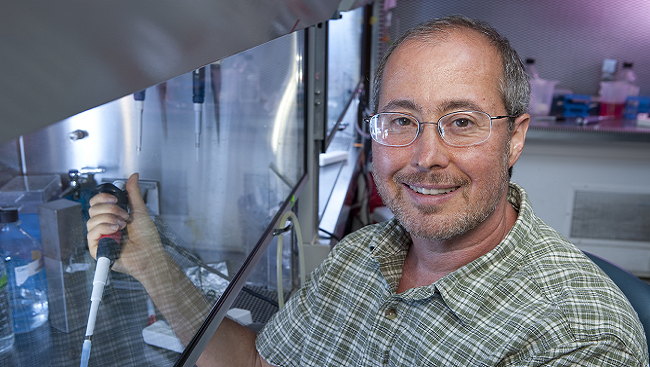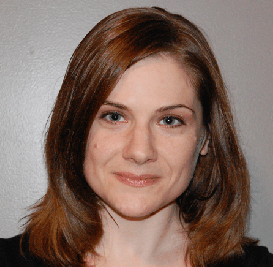Ben Barres: Glial Detective
- Published27 Feb 2013
- Reviewed27 Feb 2013
- Author Mary Bates
- Source BrainFacts/SfN
Ben Barres was practicing neurology when he made the decision to return to school for his PhD. Barres wanted to be at the forefront of research aimed at improving the lives of patients with neurological disease. For the past 30 years, Barres, now a neuroscientist at Stanford University, has studied the role of glia, specialized cells in the brain that help to nourish and support nerve cells called neurons. Barres studies the role of glia in healthy brains and those riddled by disease.

In the past few years, Barres has also been an outspoken advocate for women in science, drawing from his experience as a female-to-male transgendered person. In 2008 he received the Mika Salpeter Lifetime Achievement Award from SfN in recognition of his scientific achievements as well as his support of women in science.
What type of work do you do in your lab?
My lab explores the interactions between neurons and glia. About half the cells in the human brain are glia, but we're only beginning to understand what they do.
I became interested in glia during my medical training when I noticed they were involved in various neurological diseases. It seemed like this huge mystery: What are these cells doing normally and what is their role in disease? Are they helping the brain repair itself or damaging the brain further? At the time, there were no answers.
How do you study these cells in your lab?
We've developed new methods to separate the neurons from the glia and study each specific brain cell type in a culture dish. This lets us ask what these cells do alone and how they talk to each other and interact.
Every time we've isolated a cell type, we've discovered something unexpected. For instance, when we isolated neurons and allowed them to grow in the lab without glial cells, we found that the cells looked and acted like neurons in every way except one: they couldn't form synapses (the points at which electrical/chemical signals pass between neurons and other cells).
It turns out you need a type of glial cells called astrocytes not only for the neurons to form synapses but also for the correct functioning of those synapses. This was shocking because it was dogma that neurons contained all the wiring instructions and expressed all the molecules needed to form synapses within themselves.
Does your research have applications for human health?
Absolutely. Right now, there aren't any treatments that block the progression of neurodegenerative diseases such as Alzheimer's disease, Parkinson's disease, and glaucoma. These are all diseases that involve synapse loss. If we can find a way to rebuild the connections between neurons that are falling apart in these diseases, we might be able to halt the progression of the disease, or even reverse it. So the glia, the signals they make, and the targets they interact with are all potential targets for new drugs to repair synapses.
In addition to being highly regarded by your colleagues for your research, you have become well-known for being outspoken about increasing opportunities for women in science. Why did you decide to speak out?
I’ve experienced life as both a woman and as a man, so I have some experience of how both sexes are treated. My experience has made me really passionate about confronting and addressing discrimination head-on, and trying to make things fairer for young people just getting started.
In 2006, you penned a pointed commentary in Nature rebuking the suggestion that innate sex differences explain why fewer women succeed in math and science careers. Is there any scientific evidence that suggests such biological differences exist?
There are no innate gender differences that would have any meaningful effect on women's ability to do science and succeed in it. There is, however, a wealth of scientific evidence demonstrating that gender discrimination exists in science and negatively affects women. But when you show people data that show there is persisting bias, many will deny it. To me, that's what bias is all about: denying the data.
CONTENT PROVIDED BY
BrainFacts/SfN
Also In Archives
Trending
Popular articles on BrainFacts.org


















